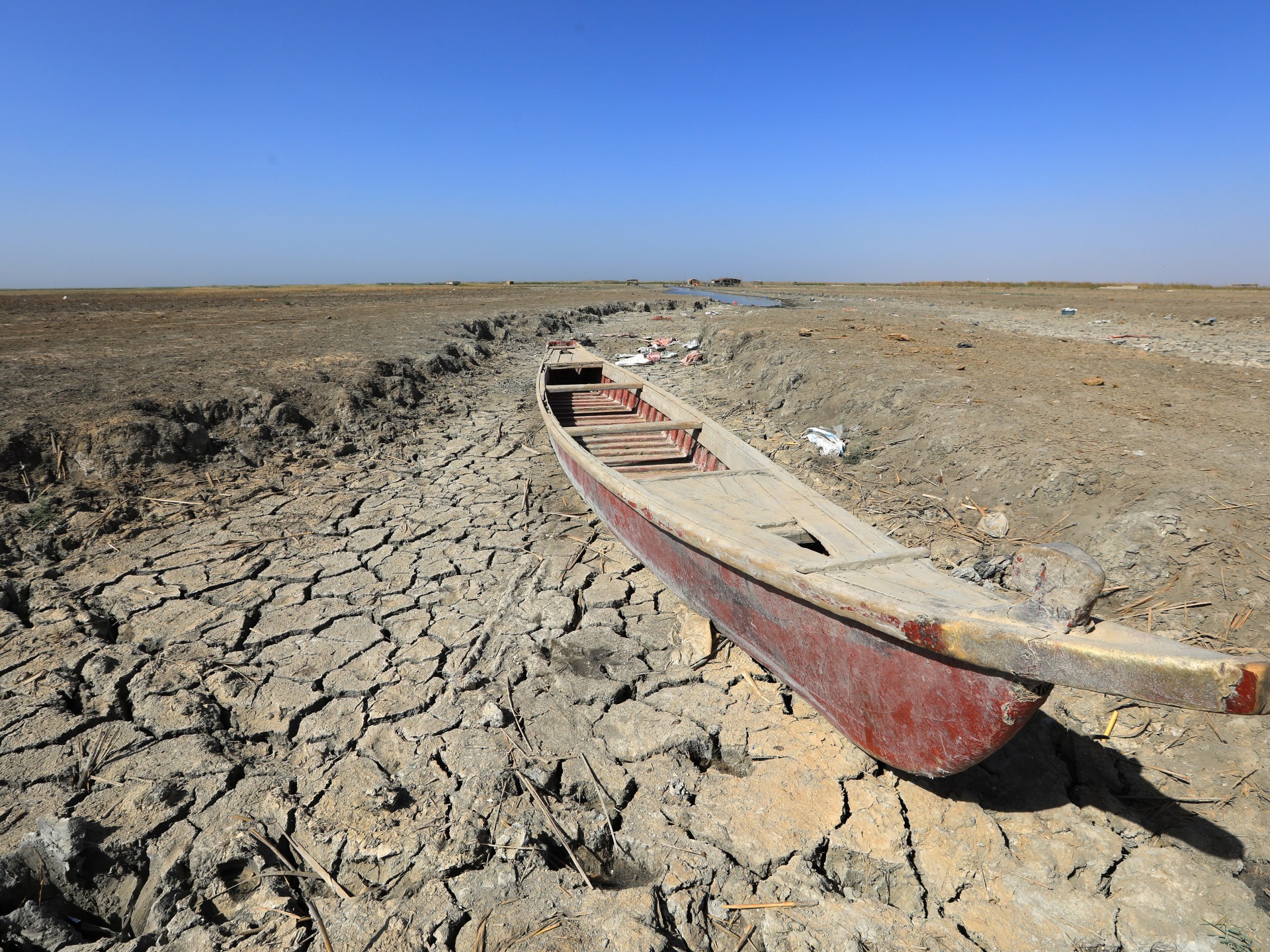Video clips documented shocking scenes showing the drying up of vast areas of the Tigris and Euphrates rivers in the cities of southern Iraq, until the bottom became visible to the naked eye in the governorates of Dhi Qar and Maysan.
Citizens monitored the decline in the level of the Tigris River in Maysan Governorate, southern Iraq, to an unprecedented extent, with the deposition of salts and dust at its bottom, a scene that raised concern about the exacerbation of the crisis during the coming summer, given that the recurring crisis began early this year.
A picture circulating on social media in Iraq showed a group of citizens crossing the Tigris River in Maysan Governorate on foot and playing sports at the bottom of the river that appeared due to the drought.
In Dhi Qar Governorate, a video showed the desiccation of the Tigris River, specifically from the side that connects two agricultural districts to each other, as the clip documented the emergence of the pillars of the bridge linking them.
Meanwhile, the Iraqi Ministry of Water Resources stated that its Minister, Aoun Dhiab, attended an expanded meeting to discuss the repercussions of the water file and the problems resulting from water scarcity and climate change. It was chaired by the President of the Republic, Abdul Latif Rashid, and a number of representatives of the United Nations, the World Bank and some ambassadors in Iraq participated in it.
The ministry affirmed that the Iraqi president stressed the need to adopt effective executive measures and the necessary and binding legislation to protect water and agricultural security, while opening a practical dialogue with neighboring countries in this regard.
In turn, Minister of Water Resources Aoun Diab said that Iraq reached an understanding during a meeting held with Iranian Energy Minister Ali Akbar Mehrabian about exchanging information and installing measurement stations on the border rivers shared between the two countries.
For its part, the Parliamentary Foreign Relations Committee warned of the seriousness of the water situation in Iraq, calling on the government to internationalize the crisis and solve it amicably and through diplomatic means with the upstream countries "Turkey and Iran."
In a televised interview, water resources expert Tahsin al-Musawi criticized the Iraqi government's handling of the water crisis and the lack of priority given to the file by successive governments amid the exacerbation of the seriousness of the crisis to such an extent that he described it as catastrophic, warning at the same time of the transformation of the Tigris and Euphrates rivers into water channels, as a result of the policy of the upstream countries. towards Iraq.
In the context, meteorologist Sadiq Attia said on his Facebook account, "The scarcity of the waters of the Tigris and Euphrates rivers and the drying up of most of their tributaries portends a summer season that is the driest, according to current data," adding that "the rest of the rainy season will not be sufficient to enrich the levels of the two rivers or Storage lakes and dams.
Iraq is one of the five countries most vulnerable to climate change and desertification in the world, especially due to the increasing drought with high temperatures that exceed 50 degrees Celsius during the summer.
The repercussions of this have begun to be evident in several joints, such as the decline in the cultivation of wheat and amber rice, the drying up of some lakes due to the lack of water supplies and rain, and the frequent dust storms.
The total consumption rate for all needs in Iraq is about 53 billion cubic meters annually, while the amount of river water in good seasons is estimated at about 77 billion cubic meters, and in dry seasons about 44 billion cubic meters.
Experts estimate the amount of water storage in Iraq at less than 5 billion cubic meters, of which 3 billion are dead storage that cannot be used, and the live storage used is only two billion, but Iraq resorted to using dead storage from Tharthar Lake, using floating pumps that pump this water, which is Salty and polluted, not suitable for agriculture.
The Haditha Dam and Tharthar Lake suffer from the problem of evaporation, as a result of which Iraq loses 10 billion cubic meters of water annually, which is equivalent to a third of the water resources of about 34 billion cubic meters.
According to the expectations of the "Water Stress Index", Iraq will be a land without rivers by the year 2040, and the two great rivers will not reach the final mouth in the Persian Gulf, and the study adds that in 2025 the features of severe drought will be very clear throughout the country with almost total drying up of the Euphrates River. Towards the south, the Tigris River turned into a watercourse with limited resources.

